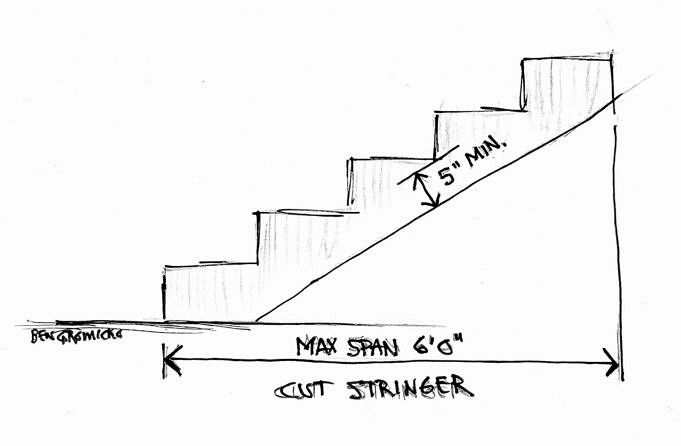It’s not hard to understand why professionals charge so much for stairs construction.
It is possible to do it all by yourself, but it is important to plan, prepare, and double-check everything if you want your finished product to last a long time.
While every aspect of the project is important and important, the most important is the stair stringer.
It will make your project much simpler and produce a high-quality product.
This is how to make a stair stringer that will fit your stairway layout.
What You’ll Need
This project is not difficult despite its complexity. It only requires a few basic tools.
Here’s what you need:
Understanding A Basic Stair Layout
It is important to know the basics of how a set of stairs works before you start working on it.
These are the major components.
- Stringer The housing at the sides of the staircase. The two sloped boards hold the risers or treads, and support the total weight of the structure.
- Steps This is the part of the stairs you will be walking on.
- Risers A board that is placed directly underneath each tread. It adds strength, enhances the appearance, and prolongs the life expectancy of the staircase.
This will help you better understand how a set of stairways comes together during the course and project.
Step 1: Create A Plan
It is easier to cut a stair stringer or build a staircase if you have a detailed plain.
Popular Mechanics says that this begins with calculating the rise-and-run. You will need to determine the height of each riser and the tread width, as well as how many you will need.
During this step, be sure to remember all local building codes.
Step II: Measure And Mark
The business term for measuring and marking stringers, which are usually two, is « laying out a stringer ».
You will need a tape measure and a carpenters square.
The stringers layout will be based on the plan that you have chosen. It will follow the layout of the treads and risers as it moves down the board.
This step is actually much easier than it sounds. You only need to measure the main dimensions of each tread and riser.
The carpenters can then be moved quickly along the length of each stringer by moving the marks to each tread and riser.
Step 3: Cut The Hair
Place one stringer flat on saw horses.
You can use your circular saw to gently and slowly cut along the line that you have just drawn.
It zig-zags so be aware that there will be strong 90 degree angles around which to cut.
I suggest reducing the number of intersections between lines. Cut as close as possible without cutting too much.
Once you have completed all the major cuts using your circular saw, you can use a handsaw for each one. You can cut your stair stringers more precisely with a handsaw.
Experts recommend that you use the first stringer as a template, rather than cutting it out with the same method.
Place it on top the second stringer, and trace the outline. Now you have a template that matches exactly the first stringer.
Finish Building Your Stairs
Once you have cut the stringers, your staircase installation should sail smoothly.
Before you begin to cut each riser or tread, make sure the stringers are placed at the right distance.
As you work, attach the treads and risers to your staircase. Your project will be complete in no time.
Last Thoughts
It is easier than you think to cut a stringer for a staircase.
I am confident that you will find our guide helpful in determining how to cut two stringers of high quality for your project.
These stringers will serve as an outline for risers, treads, and the entire staircase.
Before you start to make stringer cuts, take the time to understand basic stair anatomy.
After you’re done, take a look at these other DIY projects I recommend for your home.



